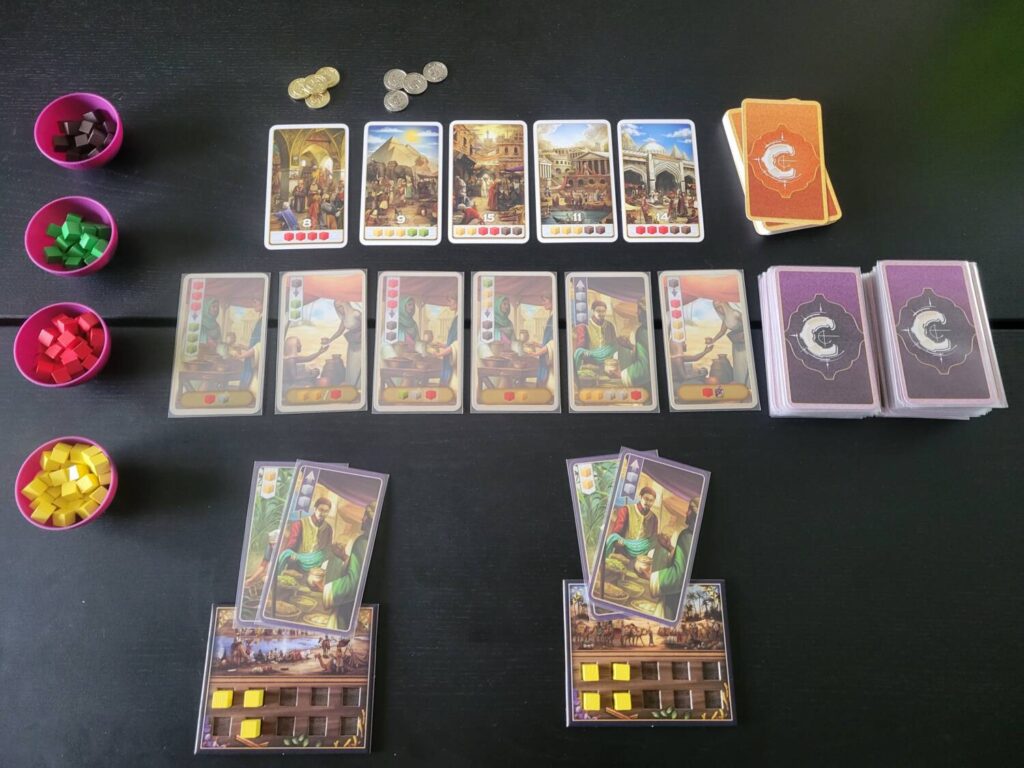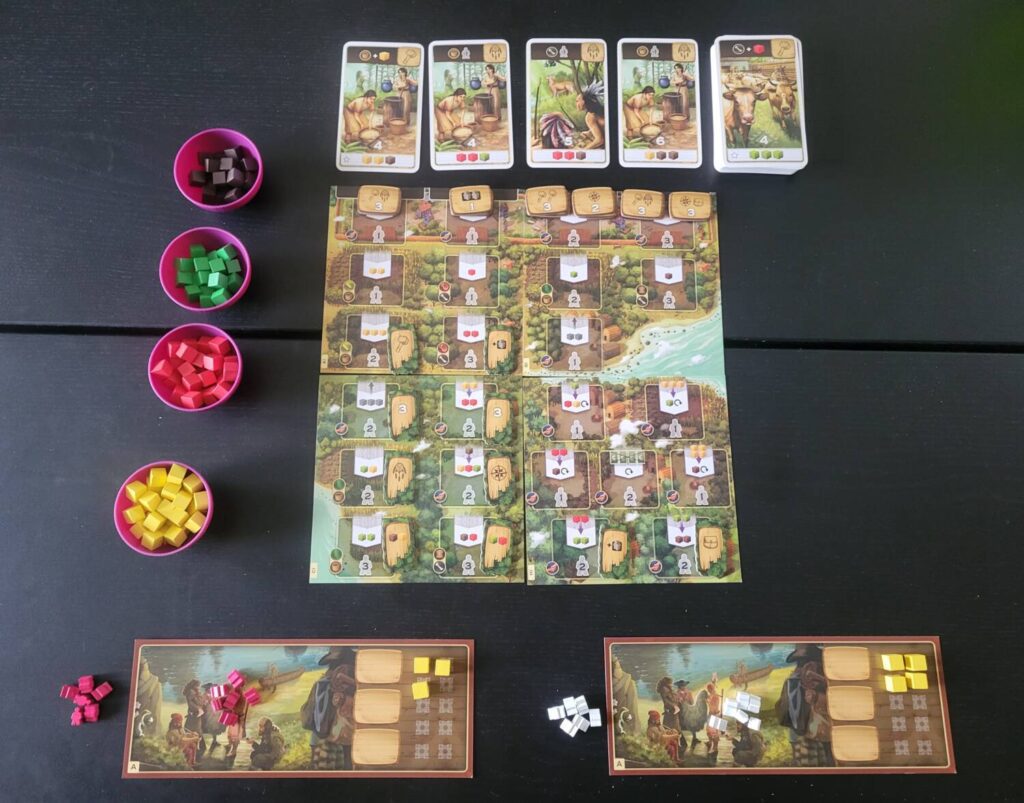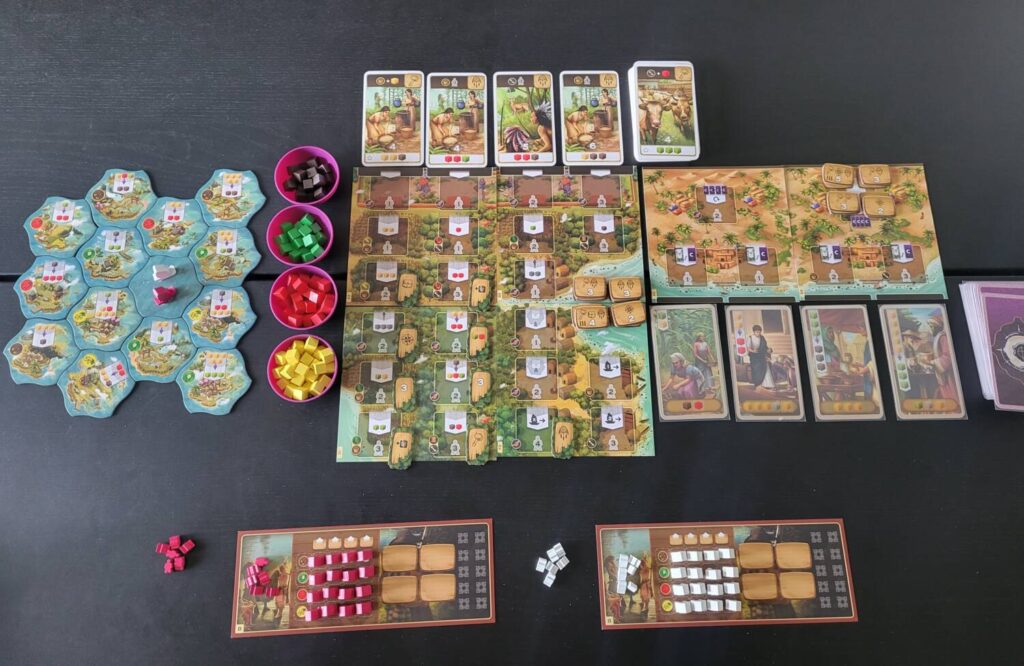Disclosure: Meeple Mountain received a free copy of this product in exchange for an honest, unbiased review. This review is not intended to be an endorsement.
No art exists in a vacuum.
This is one of the wonderful things about it. Art materially blends two things into a single object: individual experience and the work of the collective. The former’s experience, knowledge, and creative juices blend with all the work that has come before, forming a dialectic relationship. Each work of art springs forth from an individual (or sometimes, a group’s) hand while simultaneously containing flashes from all the art that came before it, whether the artist was conscious of this or not.
If you don’t agree, the remainder of what I’m going to write about here probably won’t mean much. If you do, then you’ll likely understand the violence that capitalism and industrialized production does to art.
Board games represent to me one of the last little nuggets of artistic possibility in a world of art with dollar signs attached to it. They’re indisputably trash culture: cheaply produced, quickly forgotten. Partially, this is because many people view board games as toys rather than art, and this allows games to do quite subversive things, both politically and artistically. It also allows for the Century games to spring into being.
Century: Spice Road, Century: A New World, and Century: Eastern Wonders have been in print for several years now, and with the release of the Century: Big Box, you now can have all of these games together. There’s also “Golem” editions of all the games, if you find the squeaky-clean-no-colonialism-to-be-seen-here aesthetic more to your liking.
The selling point and appeal of these games is that they’re “gateway games,” (which is a term I’m going after in a bit) which, interpreted generously, means they’re low complexity. Each game has a single page of rules, and on top of this, the three games can be combined into larger games. With the big box, you can play a game with all three.
Are any of these games that interesting? Nah. Mostly, they’re derivative of much better designs, failing to pay homage to or even gesture at what made their forebears great.
Gateway-schmateway
I have a profound dislike of the term “gateway game.” The use of it once again makes me think that the people using it don’t think that games are an art form. You wouldn’t use the term “gateway movie” or “gateway comic book” or “gateway meal.” People don’t walk around saying, “you really need to watch Barney & Friends before you can understand The Sopranos.”
A more generous interpretation of the term assumes that being able to play games is a skill, and you have to train and cut your teeth on little stuff before you can engage with big stuff. I find that a little facile, because it assumes that games are just a stepladder of memorization of mechanisms. When we learn things, we tie concepts together in unique ways, and we do so out of interest and/or necessity. I know people whose first games were 18XXes, Age of Steam, or hex and counter wargames. These people are not geniuses (well, not all of them), but they were intellectually curious–they had an interest, and followed it themselves.
People are drawn to games for the same reason we’re drawn to any art–because we have an immense yearning for the thoughts, perspectives, and experiences of other people. We don’t want to be alone. Maybe that’s an assumption too far, but I’m comfortable with it.
Now, with this diatribe in mind, let me describe the Century Series.
Century: Spice Road
Century: Spice Road is what I would call a Splendor variant, if you took much of what made Splendor tense and competitive out and replaced it with a fairly bland tempo consideration. Basically, in Spice Road, you buy cards or play cards. When you play cards, you get resources, or trade resources for better resources. When you buy cards, you add them to your hand. Eventually, you’ll need to pick up your played cards, and that takes a turn to do. Your goal: Use the resources you get to buy cards that give you points.

Spice Road is the best of the bunch, and mainly because it has a mechanic where you place resources on cards in the market display as payment for the card you want. So, if the card you want is two cards from the left, you plop resources down on those two cards, leaving a small incentive for other players to take those cards for the booby prize.
When somebody buys enough point cards, the game ends, you tally everything up, and there’s a winner.
Century: Eastern Wonders
Eastern Wonders follows the same rubric as Spice Road, but now, there’s a spatial element. You move a boat around, pooping out resources with each move, and you deposit outposts on a variable map. Each outpost allows you to do conversions or gain resources. When you sail your ship to the edges of the map, you can buy tiles that give you points for the resources you’ve collected. There’s a small tax if someone wants to use a spot where you have a boat, and it’s more expensive to build outposts where someone has already done it.

Once again, when somebody gets enough point tokens, the game ends.
Century: A New World
It’s worker placement where you get resources and you use them to buy point cards. Also, you can bump people’s workers by putting out more workers.

Bought enough point cards? Bingo, game over.
THE BIG GAME

The big game, which was the only combination of these derivations that I had the energy to play, is a worker placement game that turns the ship movement/building and card use mechanisms of the first two games into worker placement spots. When you play all three games together, you get to have the experience of playing a somewhat-shaky-feeling mid-weight eurogame zero-interaction experience that you get from about a zillion other titles on the market.
In fact, the combined game scrubs out the unique components of the first two games and basically just adds their components into A New World with a few extra bits of glitter.
More Yelling
There are many times when a blatant cash-grab sometimes ends up surprising me, but this is not one of them. The designer of these games is also the designer of Foundations of Rome, a blatant derivation of Big City that retains none of its charm and thirteen times the amount of plastic. These games are derivative of Splendor, Istanbul, and about 13,000 worker placement games, and offer no significant branches in the design conversation about the problems, foibles, and follies of those designs.
And, if you were to put these games in front of someone to try and get them into the hobby, it’s likely that you would solidify the belief that games are for children or people who are too snobby to admit that they’re just playing with toys.
Don’t play boring games. Games are art.
Games to play instead of Century: Spice Road: Splendor, Gizmos, Basari
Games to play instead of Century: Eastern Wonders: Istanbul, Yamatai, Yokohama
Games to play instead of Century: A New World: Bruxelles 1893, Nusfjord, Cryo












Oh my! This is a wonderful and informative review. Thanks!
I will avoid this.
In the mean time — I will continue to look out for future reviews of yours and see what does excite you such that those can become a part of my library. 🙂